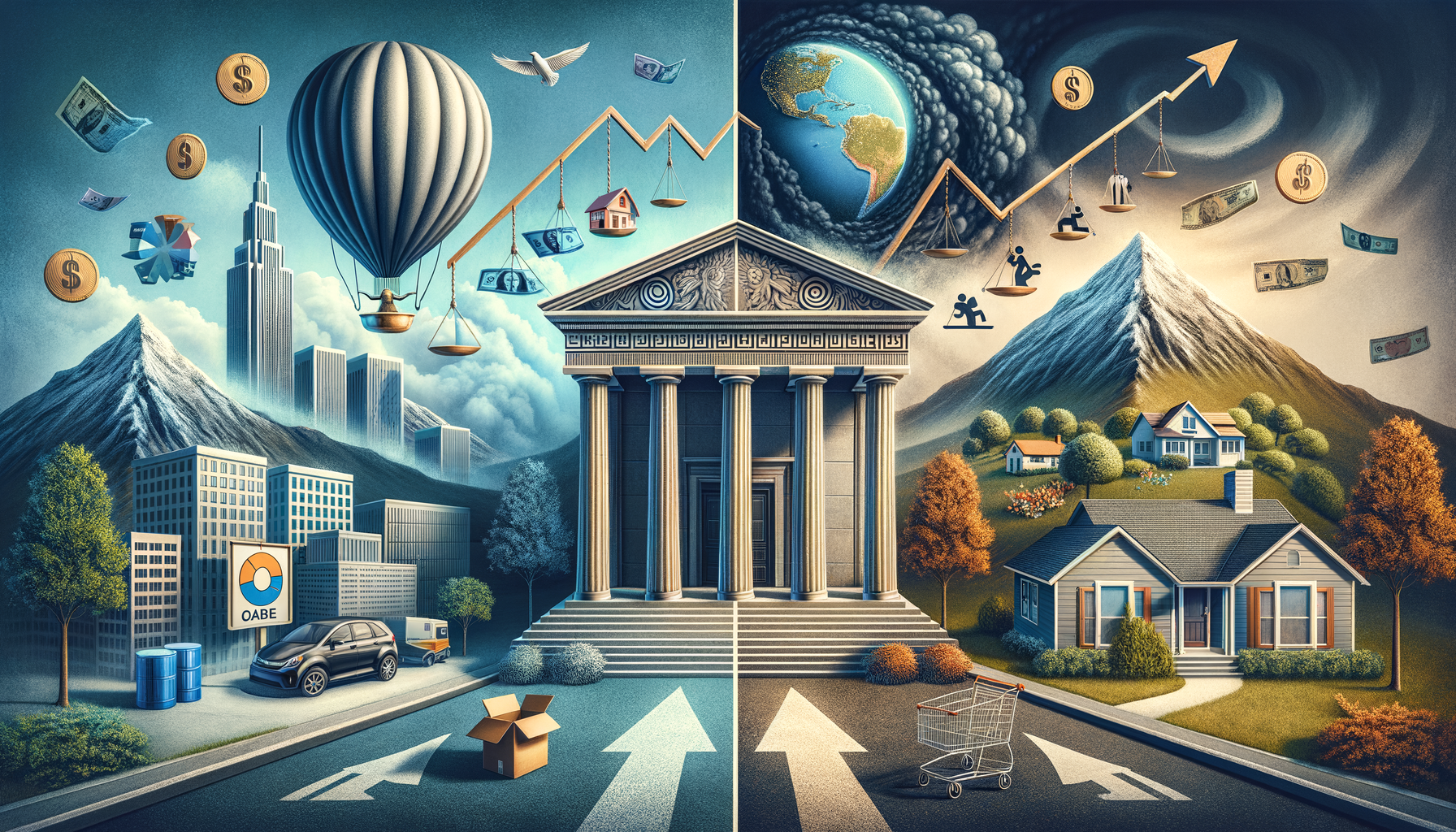“Understanding the Future Predictions of Mortgage Rates: A Comprehensive Analysis for 2024”
The realm of mortgage rates is often perceived as complex and volatile, influenced by myriad factors that boggle even the most financially savvy individuals. This essay seeks to demystify the intricacies of mortgage rates and their recent changes, trying to piece together not just the ‘what’ and ‘how’, but also the ‘why’ behind the fluctuations.
### Understanding Mortgage Rates
Mortgage rates, fundamentally, are the interest rates assigned to a home loan. When purchasing a property, the majority of buyers require a loan, and the terms of this loan can significantly influence the financial well-being of the borrower for decades to come. The rate on a mortgage can either be fixed, where it remains the same for the duration of the loan, or variable, where it fluctuates in response to the financial market.
### Recent Movements in Mortgage Rates
Currently, mortgage rates have been showing an upward trend, a situation that has drawn mixed reactions from various quarters. As rates increase, the cost of borrowing capital to purchase a home rises, potentially cooling market activities as fewer buyers can afford the higher monthly payments associated with new, more expensive loans.
Why do mortgage rates fluctuate? Several macroeconomic factors play into the rise and fall of these rates:
#### 1. **The Federal Reserve’s Monetary Policy:**
The Federal Reserve, often simply referred to as the Fed, significantly influences mortgage rates through its monetary policy decisions. When the Fed increases the federal funds rate, it generally leads to an increase in borrowing costs, including mortgage rates. Conversely, when it lowers the rate, borrowing becomes cheaper, leading to lower mortgage rates. The Fed’s decisions are often in response to various economic indicators including inflation rates, employment figures, and GDP growth.
#### 2. **Inflation:**
Inflation diminishes the purchasing power of money, meaning over time, the same amount of money buys less due to rising prices. When inflation rates are high, lenders might increase mortgage rates to retain the real value of the returns on their loans.
#### 3. **Economic Growth Indicators:**
Strong indicators of economic growth, such as high employment rates and rising GDP, can lead to higher mortgage rates. In a robust economy, consumers have more income, which increases demand for home loans and, consequently, leads to higher rates.
#### 4. **Global Economic Events:**
Global events can also impact mortgage rates. For instance, if overseas markets experience instability, investors might flock to the safer U.S. Treasury bonds, influencing interest rates across the board, including those for mortgages.
### Current Mortgage Rates Scenario
As of recent assessments, the conventional 30-year fixed mortgage rate has surged to levels not seen in several years. This uptrend is partly due to the actions taken by the Federal Reserve in its bid to combat high inflation rates. By increasing the federal funds rate, the Fed has indirectly pushed the mortgage rates higher.
For potential homebuyers or those looking to refinance, understanding the trajectory of these rates is crucial. Higher rates translate to higher monthly payments, thus affecting affordability. This change can dampen buying enthusiasm, slow down the housing market, and potentially lead to a decrease in home prices if elevated rates are sustained over a period.
### Implications for Buyers and Homeowners
If you’re considering purchasing a home or refinancing your existing mortgage, the rising interest rates suggest that acting sooner rather than later might be advisable. Locking in a rate before further increases can save significant money over the life of the loan. Conversely, if you’re on a variable-rate mortgage, it might be time to consider switching to a fixed-rate loan to guard against future rate increases.
However, it’s not all grim; some analysts argue that rising rates can lead to a more balanced housing market. Over the previous years, record-low rates led to fierce bidding wars and skyrocketly home prices in many areas, putting homeownership out of reach for many. Higher rates could temper these conditions, slowing down the pace and potentially making homes more accessible as prices stabilize or even dip.
### Looking Ahead: Future Predictions
Forecasting mortgage rates with pinpoint accuracy is challenging as they depend on the interplay of various global and domestic factors. However, with the Fed hinting at maintaining a tighter monetary stance to keep inflation under control, mortgage rates might remain elevated or even rise further in the short term.
For those in the housing market, keeping a close eye on both the Fed’s decisions and broader economic indicators will be essential. Planning and flexibility can help manage the impact of rising rates. For instance, exploring different loan options, adjusting your budget for a higher down payment, or considering various geographical locations could all be wise strategies.
### Conclusion
Navigating the mortgage rate landscape requires a mix of informed decision-making and strategic planning. By understanding what influences these rates and keeping abreast of economic trends, potential homeowners and existing borrowers can make educated decisions that align with their financial goals and realities.
As we watch the shifts in mortgage rates, being proactive, staying informed, and seeking expert advice when needed, will be the keys to effectively managing the challenges and opportunities that arise in the ever-fluctuating real estate market.

